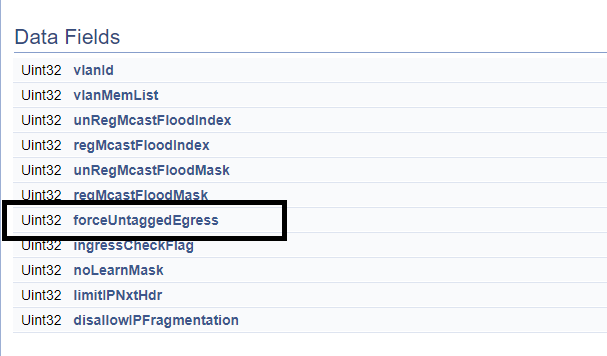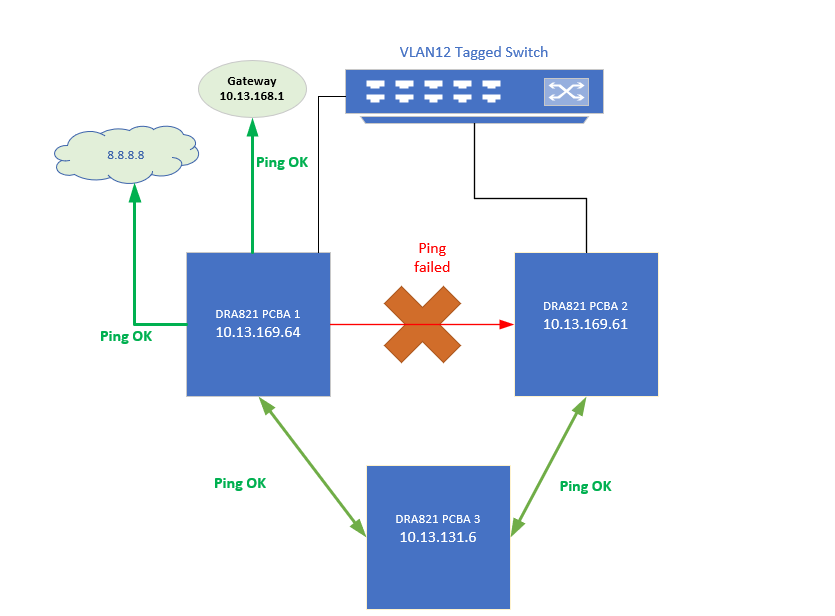Other Parts Discussed in Thread: DRA821
Hi ,
We are using TISDK 8.1 uboot + RTOS+ QNX environment.
On 5 port switch we need to:
- Tag VLAN12 on egress for Port1 and Port4
- Untag VLAN12 on ingress for port1 and port4
- Egress packet priority: 6
Could you please let us know the procedure to do this?
Thanks,
Swapna





